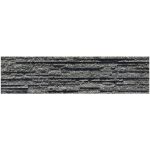Introduction
In the realm of home design and architecture, the use of stone has long been revered for its timeless appeal and durability. Cultured stone veneer, also known as manufactured stone or faux stone, has emerged as a popular alternative to natural stone due to its affordability, versatility, and ease of installation. This article explores the various aspects of cultured stone veneer, including its composition, benefits, applications, and maintenance, to help homeowners make informed decisions when incorporating this material into their living spaces.
Composition of Cultured Stone Veneer
Cultured stone veneer is a man-made product designed to replicate the look and feel of natural stone. It is typically composed of lightweight concrete aggregates, pigments, and additives that are molded and colored to resemble various types of natural stone, such as limestone, granite, or slate. The manufacturing process involves pouring the concrete mixture into molds that are cast from real stone to create realistic textures and shapes.
One of the key advantages of cultured stone veneer is its ability to mimic the intricate details and variations found in natural stone, providing homeowners with a cost-effective way to achieve the aesthetic appeal of stone without the hefty price tag. Additionally, the lightweight nature of cultured stone veneer makes it easier to handle and install compared to natural stone, reducing labor costs and simplifying the installation process.
Benefits of Cultured Stone Veneer
There are several benefits to choosing cultured stone veneer for your home improvement projects. Some of the most notable advantages include:
1. Cost-Effectiveness: Cultured stone veneer is typically more affordable than natural stone, making it a budget-friendly option for homeowners looking to enhance the visual appeal of their homes without breaking the bank.
2. Versatility: Cultured stone veneer comes in a wide range of colors, textures, and styles, allowing homeowners to customize their design choices to suit their preferences and complement the overall aesthetic of their homes.
3. Lightweight: The lightweight nature of cultured stone veneer makes it easier to transport, handle, and install, reducing labor costs and making it a suitable option for DIY enthusiasts.
4. Durability: Cultured stone veneer is designed to withstand the elements and maintain its appearance over time, providing long-lasting beauty and value to your home.
5. Easy Maintenance: Cultured stone veneer requires minimal maintenance compared to natural stone, simply needing periodic cleaning with water and mild soap to keep it looking pristine.
Applications of Cultured Stone Veneer

Cultured stone veneer can be used in a variety of ways to enhance the interior and exterior of your home. Some common applications include:
1. Where to buy high-quality stone veneer : Cultured stone veneer can be used to create stunning exterior facades that mimic the look of traditional stone, adding curb appeal and character to your home.
2. Fireplaces: Cultured stone veneer is a popular choice for fireplace surrounds and mantels, providing a cozy and rustic look that complements the warmth of a fire.
3. Accent Walls: Cultured stone veneer can be used to create eye-catching accent walls in living rooms, bedrooms, or outdoor spaces, adding texture and visual interest to any room.
4. Kitchen Backsplashes: Cultured stone veneer can be installed as a backsplash in kitchens to create a focal point and protect walls from splashes and stains.
5. Garden Walls: Cultured stone veneer can be used to create decorative garden walls, planters, and landscaping features that add a touch of elegance to outdoor spaces.
Maintenance of Cultured Stone Veneer
Proper maintenance is essential to preserving the beauty and integrity of cultured stone veneer. Here are some tips to keep your cultured stone veneer looking its best:
1. Regular Cleaning: Use a mixture of water and mild soap to clean your cultured stone veneer periodically, removing dirt, dust, and debris that can accumulate over time.
2. Avoid Harsh Chemicals: Avoid using harsh chemicals or abrasive cleaners on your cultured stone veneer, as they can damage the surface and affect the color and texture of the stone.
3. Sealing: Consider applying a sealant to your cultured stone veneer to protect it from moisture, staining, and discoloration, especially in high-traffic areas or outdoor installations.
4. Inspect for Damage: Regularly inspect your cultured stone veneer for any signs of damage, such as cracks, chips, or discoloration, and address any issues promptly to prevent further deterioration.
5. Professional Maintenance: For more extensive maintenance or repairs, consider hiring a professional contractor with experience working with cultured stone veneer to ensure the job is done correctly and effectively.
Conclusion
Cultured stone veneer offers homeowners a cost-effective and versatile alternative to natural stone for enhancing the aesthetic appeal of their homes. With its realistic appearance, durability, and ease of installation, cultured stone veneer has become a popular choice for a wide range of applications, from exterior facades to interior accent walls. By understanding the composition, benefits, applications, and maintenance of cultured stone veneer, homeowners can make informed decisions when incorporating this material into their living spaces, creating beautiful and enduring designs that stand the test of time.
